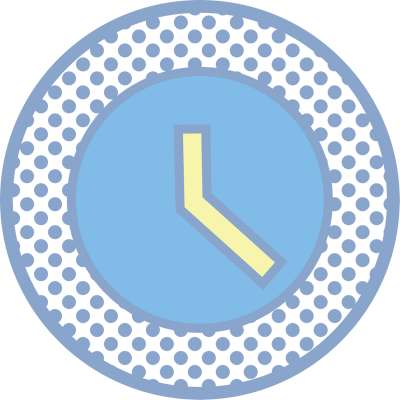- Home
- Treatments
- Retinal Laser Photocoagulation
Retinal Laser Photocoagulation
What is Retinal Laser Photocoagulation
Retinal laser photocoagulation is a modality of treatment used by ophthalmologists to treat various disorders related to retina. The list of disorders includes diabetic retinopathy, retinal vein occlusion, retinal breaks, central serous chorioretinopathy and choroidal neovascularization. Unlike patients’ beliefs, the procedure is not like a surgery. The doctor during this therapy ensures that the laser beam (focussed light waves) falls on the desired site in the retina. During this process heat energy is produced and retinal coagulation is achieved and thereby the intended treatment is provided.
Types and benefits of Retina Laser
According to the type of retinal disorder, laser therapy is provided in different ways.
Proliferative Diabetic Retinopathy (PDR)
- Proliferative diabetic retinopathy is a form of advanced or end-stage diabetic retinopathy. Due to the long duration of diabetes and uncontrolled blood sugar levels, the retinal blood vessels undergo changes which happen in stages, ultimately leading to PDR. PDR is a vision-threatening disorder. When timely treatment is not provided, it can cause complications like bleeding within the eyes from the abnormal vessels and/or can retinal detachment.
- Retinal laser therapy is helpful in PDR as it decreases the risk of such complications. The doctor performs pan-retinal photocoagulation (PRP) to treat PDR.
- The retina is a 360-degree structure that is responsible for vision. The central retina is called as macula and is the chief zone responsible for fine vision. During proliferative diabetic retinopathy, the doctor applies laser therapy to the poorly vascular retinal areas sparing the macula. Proliferative diabetic retinopathy therapy is provided in three to four sessions since the almost 360-degree retina is slowly covered with laser spots. The formation of abnormal blood vessels and undue complications are prevented by this procedure.
Diabetic Macular Edema (DME)
DME is abnormal fluid collection leading to swelling at the level of the macula, causing vision loss. Retinal laser photocoagulation is beneficial in some cases of DME. Here, minimal laser spots are given targeting the leaky macular blood vessels to reduce the swelling.
Retinal Vein Occlusion (RVO)
In RVO, the entire retinal vessel or a part of the retinal vessel gets blocked due to various reasons leading to abnormal blood flow to the part of the retina supplied by the vessel. Here, Retinal laser therapy is useful, similar to PRP in PDR, as explained before.
Retinal Tears, Holes and Lattice Degeneration
Retinal tears, holes and lattice degenerations (areas of retinal thinning) occur in almost 10% of the normal population and are more common among myopes. If not treated, there is always a risk of developing retinal detachment through the breaks.
The doctor, in such cases, can delimit the retinal breaks with two to three rows of laser spots around the breaks, thus causing dense adhesion in the surrounding retina and thereby decreasing the risk of retinal detachment. It is mandatory to screen and laser such lesions prior to LASIK and cataract surgeries.
Central Serous Chorioretinopathy (CSC) and Choroidal Neovascularization
Both the conditions lead to areas of leak at the macular level, causing fluid collection and vision loss. Based on the specialist’s decision, in some cases, retinal laser therapy targeting the leaky areas is beneficial.
Patient preparation
The laser procedure is performed only after providing topical anaesthesia. Eye drops would be used prior to the procedure to minimize pain. The procedure is relatively painless. The patient might feel a mild pricking sensation during the therapy. The entire procedure might take place for five to twenty minutes, depending on the patient’s disease.
After the procedure
The patient might feel mild glare and visual discomfort for a day or two. He or She will be advised to use antibiotic and lubricant eye drops for 3 to 5 days, depending on the type and duration of the procedure. Extensive PRP in diabetic retinopathy can lead to a decrease in contrast sensitivity and colour vision.
Types and method
There are two methods by which laser therapy can be performed: Contact and Non-Contact methods. In the contact procedure, a lens with a lubricating gel will be placed over the patient’s eyes, and laser therapy would be delivered in sitting position.
In the non-contact method, the patient is made to lie down, and laser therapy is delivered. Sometimes the doctor might apply minimal pressure around the patient’s eyes with a handheld instrument.
Conclusion
Retinal laser photocoagulation is a relatively safe, fast and a painless procedure.
Written by: Dr. Dheepak Sundar – Consultant Ophthalmologist, Velachery
Frequently Asked Questions (FAQs) about Retinal Laser Photocoagulation
How serious is branch retinal vein occlusion?
In its entirety, branch retinal vein occlusion generally carries a good prognosis. Some of the many patients of branch retinal vein occlusion do not require any medication or treatment because of two reasons:
- First, because the blockage or clog did not interfere with the macula
- Second, because the patients of branch retinal vein occlusion do not receive any significant decrease in the vision.
- In fact, after one year, of 60% of branch retinal vein occlusion patients, untreated and treated, maintain better vision than 20/40.
What are the causes of Branch Retinal Vein Occlusion (BRVO)?
BRVO or branch retinal vein occlusion refers to the blockage of one or more central retinal vein branches that run through the optic nerve. Floaters, distorted central vision, blurred vision, and peripheral vision loss are some of the many symptoms of branch retinal vein occlusion.
When it comes to causes, branch retinal vein occlusion is more commonly found in patients with atherosclerosis, diabetes, and high blood pressure. In addition, people who smoke are also at risk of developing branch central vein occlusion. Now, let’s delve further into branch retinal vein occlusion treatment.
Even though this disease cannot be completely cured, there are some effective treatments and solutions that can significantly improve vision by reducing macular edema. Below we have mentioned some of the many branch retinal vein occlusion treatments:
- A laser is often used for branch retinal vein occlusion treatment.
- intravitreal injection
- FDA approved Lucentis
- FDA approved Eylea
Steroids like Ozurdex and Triamcinolone
What is central vision occlusion?
In medical terms, blockage of the central retinal vein is referred to as central vision occlusion. People with glaucoma, diabetes and increased blood viscosity are more vulnerable to this eye disease.
What is pan retinal photocoagulation?
PRP or pan retinal photocoagulation is a laser eye treatment for the eye which is used to cure abnormal blood vessels situated at the back of the person’s eye in the drainage system or the retina within the eyeball.
What is laser photocoagulation?
In simple terms, laser photocoagulation is an eye laser that is used to destroy or shrink abnormal structures in the eye. On the other hand, reduced colour vision, lowered night vision, bleeding, etc., are some of the many complications of laser photocoagulation.

Do not ignore eye trouble!
Now you can reach our senior doctors by booking an online video consultation or a hospital appointment
Book an appointment now